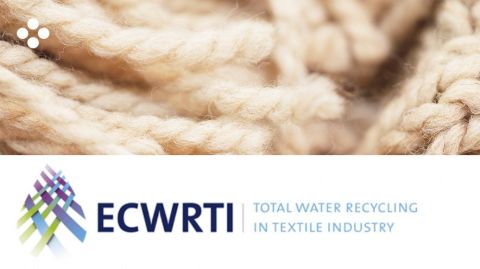Waterloop Closure
The European textile sector consumes large quantities of water. Companies first place materials in a dye bath in order to dye them, and the materials are then rinsed in order to remove surplus dye substances. The rinse water containing dye pigments and chemicals ends up in a privately owned or public water treatment plant.
90 per cent re-use
“The European project ECWRTI is intended to persuade textile companies to clean their wastewater more thoroughly and to re-use it. The EColoRO concept makes that possible,” explains Sofie Van Ermen from VITO. “By using electrocoagulation, EColoRO removes around 95 per cent of the dye pigments from the wastewater. The water is then completely purified using membranes. This enables textile companies to re-use 70 to 80 per cent of their water. The new technology has already been tested in a Belgian and an Italian textile plant on a pilot scale. A complete demo plant is currently being built in the Belgian textile company.”
Valorising wastewater
Around 20 per cent of wastewater is lost through evaporation or ends up as residual water in concentrated waste streams, but these residue streams offer economic potential. “VITO is investigating the possibilities for finding a new use for the pigment, and the iron-rich sludge that is left over,” says Sofie. “Even the concentrated salt streams that are generated have economic potential.” The EColoRO concept offers a solution for textile companies in regions where the provision of drinking water is a growing problem. The time for return on investment for a plant in Europe is estimated at between two and four years.
Partners
Het ECWRTI-project steunt op een Europees consortium onder leiding van het Nederlandse bedrijf EColoRO BV en het Nederlandse Institute for Sustainable Process Technology (ISPT). De andere deelnemers zijn VITO, het Tsjechische bedrijf INOTEX Ltd., het Nederlandse bedrijf Morselt Borne BV en EURATEX, de Europese federatie van textielfabrikanten. Het project krijgt de steun van het Europese Horizon 2020-programma.

